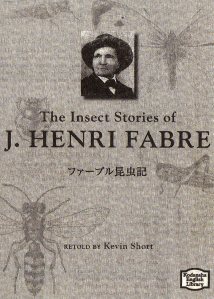Scientist Jean Fabre (1823-1915) seems out of place in our time and in his own. He was a scientist more in the mold of Henry David Thoreau than Louis Pasteur or  Niels Bohr. Here is a man who made a home in a nearly uninhabitable plot of land overrun by insects and rodents in order to watch up close the behaviors of bugs most of us consider pests. “The Harmas,” the first chapter in Fabre’s book The Life of the Fly, reveals, at first glance, something of a mad scientist too engrossed in the world of his subjects, but as we look deeper we find a timely reminder of the philosophical and imaginative heart of science.
Niels Bohr. Here is a man who made a home in a nearly uninhabitable plot of land overrun by insects and rodents in order to watch up close the behaviors of bugs most of us consider pests. “The Harmas,” the first chapter in Fabre’s book The Life of the Fly, reveals, at first glance, something of a mad scientist too engrossed in the world of his subjects, but as we look deeper we find a timely reminder of the philosophical and imaginative heart of science.
Fabre moved into a dilapidated home with inarable land, choosing the long abandoned property because it was teaming with bugs and weeds. He described his new home as the place for which he had always prayed—in his words an “Eden” which he held simultaneously as cursed and blessed. He spent his days among the creatures, observing them meticulously. He treated his habitat as part living laboratory and part hermitage. His stay in the Harmas was as much a retreat from the world as a field of study. The wildlife he treated as both study subjects and material for meditation.
This content, as well as dozens of other articles and resources, are available to our member schools and educators.
Click here to learn about becoming a member.
Existing members log in here:
